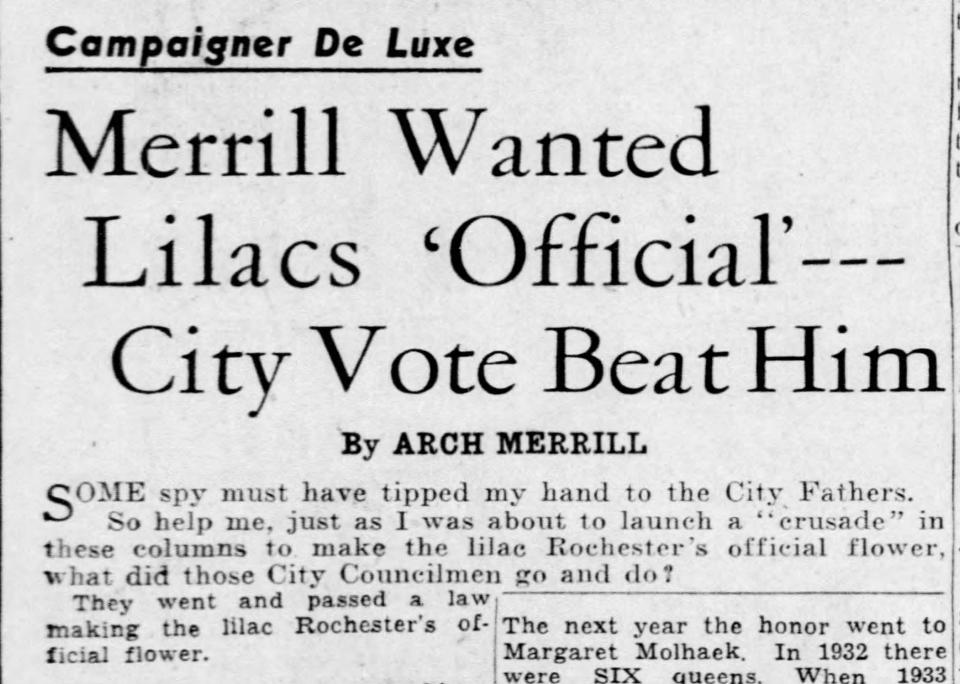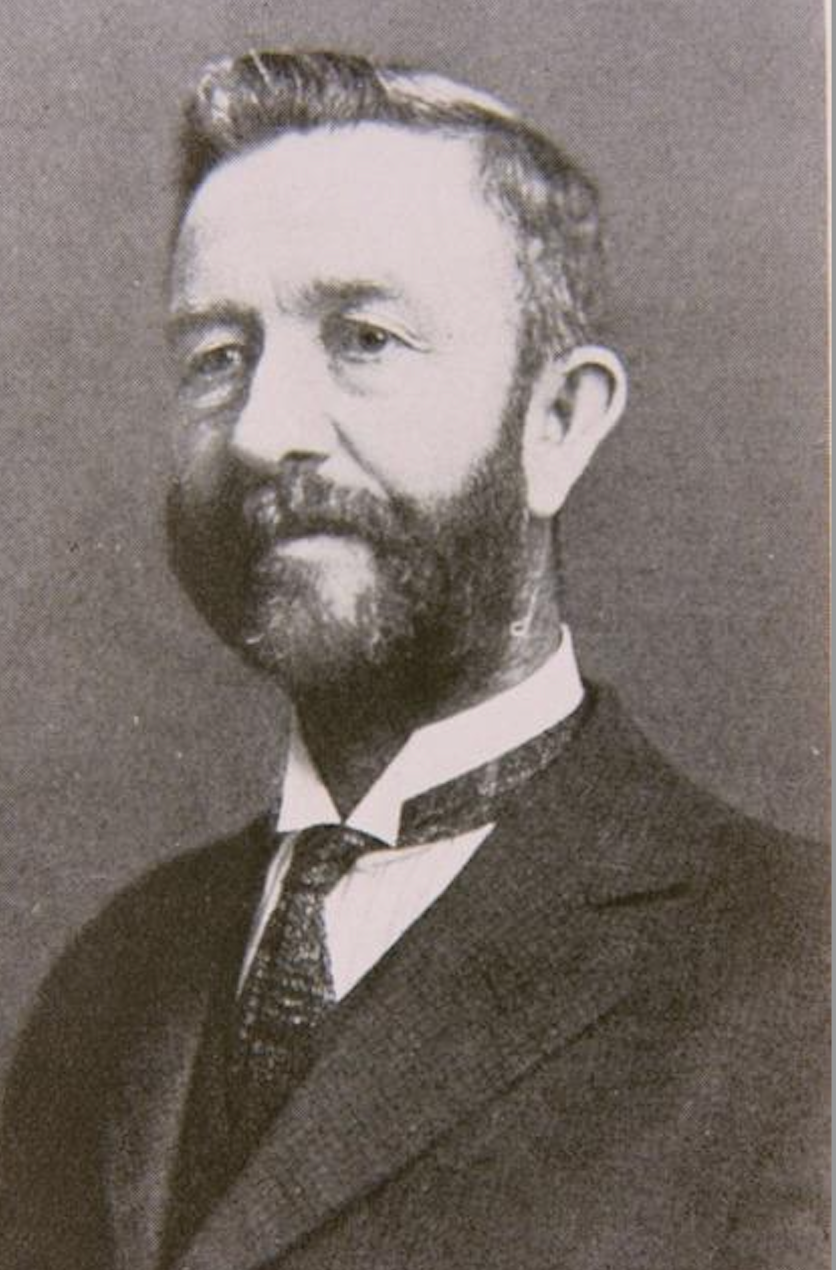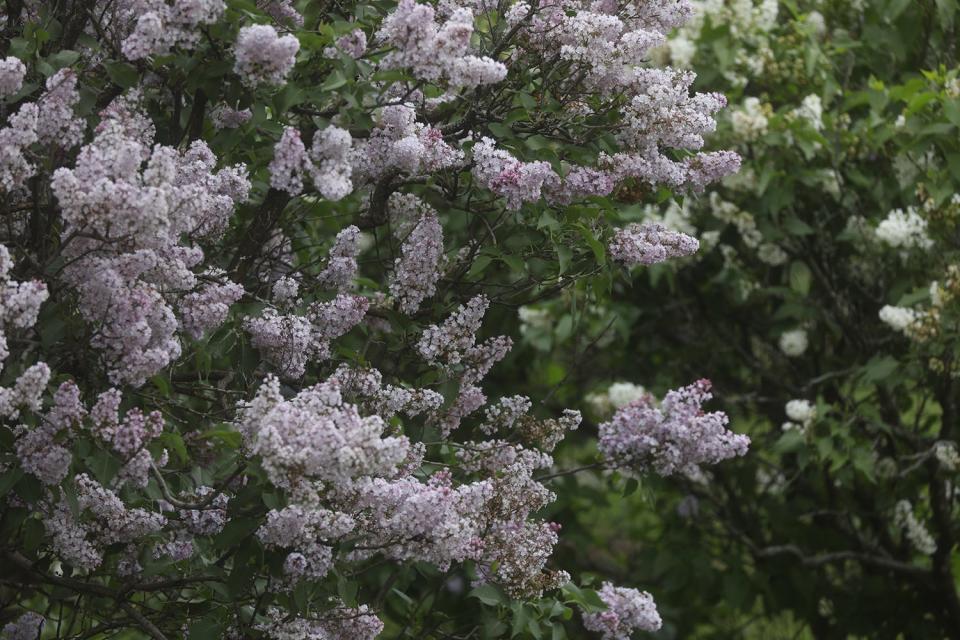Celebrate Rochester's lilacs, they're beautiful and official thanks to this man
Arch Merrill was upset, or at least pretending to be.
In May 1948, the Democrat and Chronicle columnist described how he had been upstaged by the Rochester City Council
Just as he about to launch a “crusade” to make the lilac the city’s official flower, the council made the designation official.
It was about time, Merrill noted. And the lilac was the obvious choice. (Earlier, there had been lobbying on behalf of the aster, and, for a while, the rose had support. Neither prevailed.)

“All these years the Flower City had been limping along without an official flower — like a queen on her throne, clad in royal robes but without any crown,” Merrill wrote. “Meanwhile, every springtime for over half a century, thousands were flocking to the fragrant slopes of Highland Park.”
Those slopes were, and are, made fragrant by lilac bushes, reportedly 1,200 now.
The lilacs were first planted in the 1890s by John Dunbar, the assistant superintendent of parks in Rochester.
A Scottish emigre, Dunbar had experience on an estate there and on Long Island, and he had extensive contacts with horticulturalists who sent him lilac species.

By 1905, word of Dunbar’s lilacs had gotten out well beyond Rochester. “Hundreds were coming, by street car, horse and buggy, and on foot, to view their splendor in the spring,” Merrill wrote.
What’s now the Lilac Festival, May 10 to 19 this year, began as a Lilac Sunday in 1909 and has grown to the megadraw it is now.
The festival is lots of things — not just lilacs, but food and music, as well as a parade and a run, and much more.
For sure, it’s a Rochester rite of spring, a goodbye to winter, a hello to warmer (at least we hope) times.
In a way, we haven’t quite earned the spring we celebrate, as it doesn’t seem like nature ever went to sleep this last winter. We had very little snow and the cold days were offset by mild days.
But the lilacs don’t care. They’ve shown up. The crowds have shown up, too. Whether we’ve earned it or not, it’s springtime in Rochester. Stop and smell the lilacs. They’re official, after all.

Partial totality
In a recent column calling for more total solar eclipses in Rochester, I lamented that, as of now, we won’t be the path of a total solar eclipse until 2079.
Turns out it will be even longer still, and I apologize for getting up your hopes.
Dan Schneiderman, eclipse partnerships coordinator for the Rochester Museum & Science Center, wrote to note that Rochester won’t quite experience totality in 2079. The sun will only be 98.63% blocked then. Close enough, some would argue, but not technically total.
So, readjust your calendars. Schneiderman notes that the next total solar eclipse in Rochester will take place in 2144. Stay tuned.
From his home in Geneseo, Livingston County, retired senior editor Jim Memmott, writes Remarkable Rochester, who we were, who we are. He can be reached at jmemmott@gannett.com or write Box 274, Geneseo, NY 14454.
Remarkable Rochesterians
Speaking of the lilacs in Highland Park, let’s give credit where credit is due add the name of this horticulturist to the list of Remarkable Rochesterians that can be found at: https://data.democratandchronicle.com/remarkable-rochesterians/
John Dunbar (1859-1927): In the 1890s he planted lilac seedlings in Highland Park, beginning and curating what became one of the largest and finest collections of lilacs in the world. A native of Scotland, he worked on estates there and in England before coming to Long Island in the United States in 1887. He moved to Rochester in 1891 to work in Rochester’s park system. Named assistant superintendent of parks in 1895, he wrote extensively on horticulture and also was a leader in many groups, including the Society of American Florists and Ornamental Horticulturalists.
This article originally appeared on Rochester Democrat and Chronicle: John Dunbar responsible for beloved lilacs in Rochester NY

